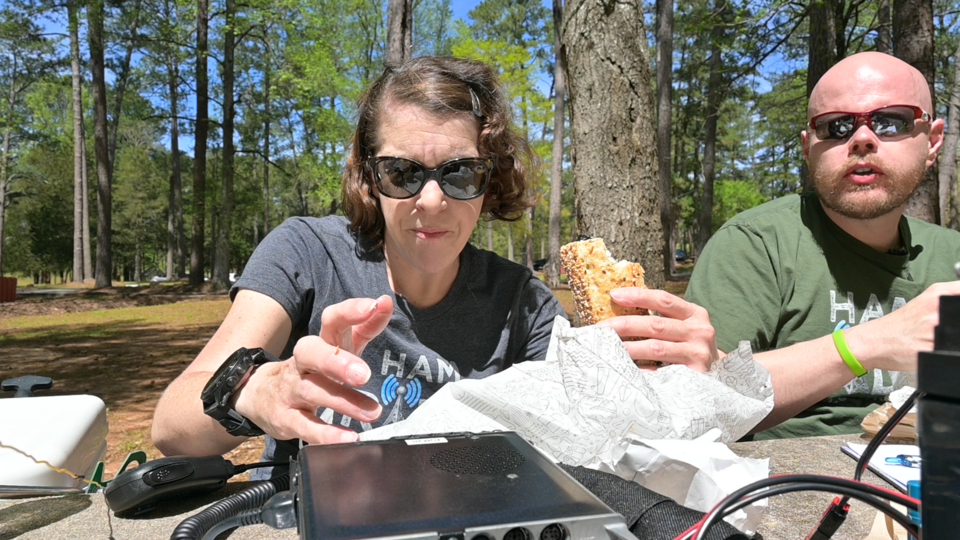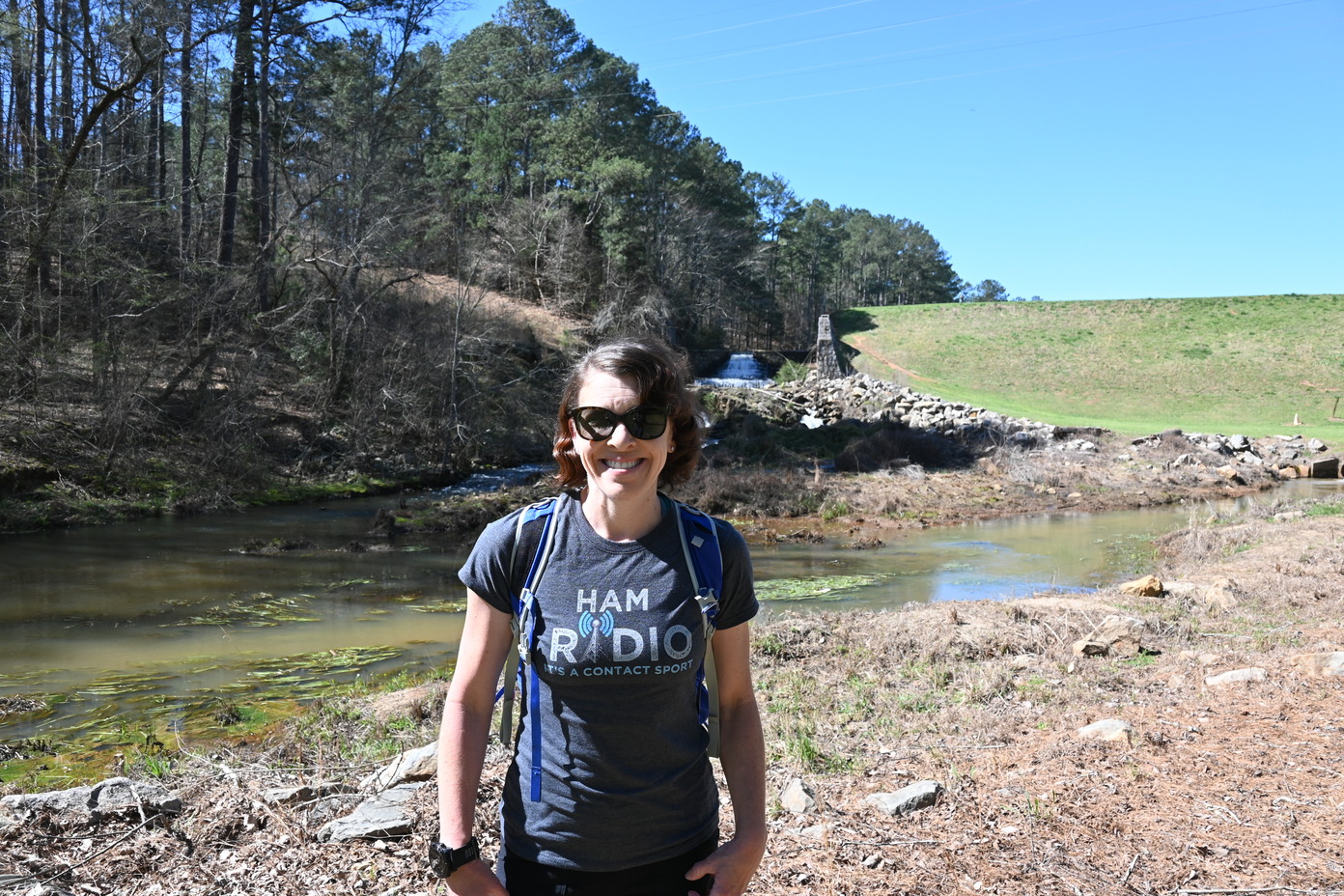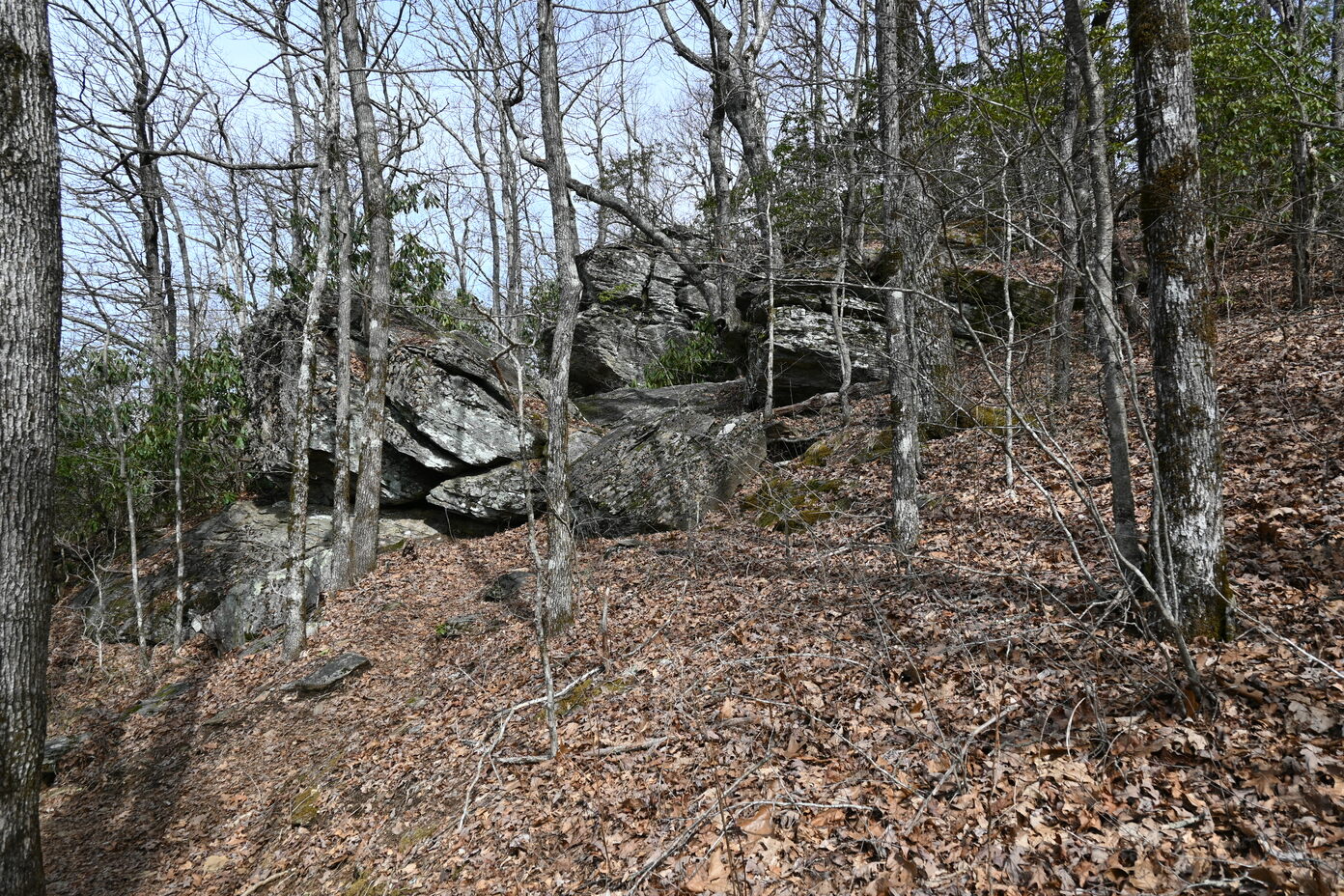My first experience with Parks on the Air (POTA) -- I'm hooked!
Two years ago, I earned my General ticket. Within this time, I have completed a few SOTA activations and made a handful of QSOs with SOTA and POTA activators, but I have been on the air sporadically, at best. With the New Year, we all try to recharge/reset/have new goals to have a better year than the year before. Looking back on the last few years, I’ve spent a lot of time at home. The things keeping me at home are my day job (software engineer), running predominantly in my neighborhood, weightlifting in my home gym, and knitting and crocheting, among other things. Although these are all things I enjoy, they do not encourage me to leave the house! Thus, I decided that 2023 would be the year in which I made a better effort to go somewhere other than the grocery store and the post office.
My partner (Ben, KO4KVH, and a SOTA enthusiast) suggested we try POTA this year: we have several state parks and wildlife management areas (WMAs) nearby and already own radios, antennas, and many accessories needed to make POTA happen. This sounded like a convenient and cost-effective outing, so I figured why not: after all, it gets me out of the house to try something new, right?
Earlier in the month, I took my first steps to reintroduce myself to ham radio by attending TechFest hosted by the Gwinnett Amateur Radio Society. There, we met some of our previous SOTA contacts in person. One of our SOTA contacts was at the POTA booth explaining more of its details, and it sounded like a lot of fun (as a competitive person, I love that there are many awards to obtain)! Since it was supposed to be nice weather that weekend, we decided to go ahead and attempt our first POTA activation! We chose Hard Labor Creek State Park (Rutledge, GA, K-2184) since it’s an easy drive from our house; we’re very familiar with the park (as we travel out there to do road cycling); and we had a good idea of where we could readily set up our equipment.
Assuming that the activation would be similar to SOTA activations, we opted to use our Yaesu FT-818 for this attempt. Although this is a QRP rig, it has performed well during SOTA activations, and we decided it would be sufficient for getting our feet wet. We packed the rig, an antenna, and some 18650 batteries and headed out to give this a try.
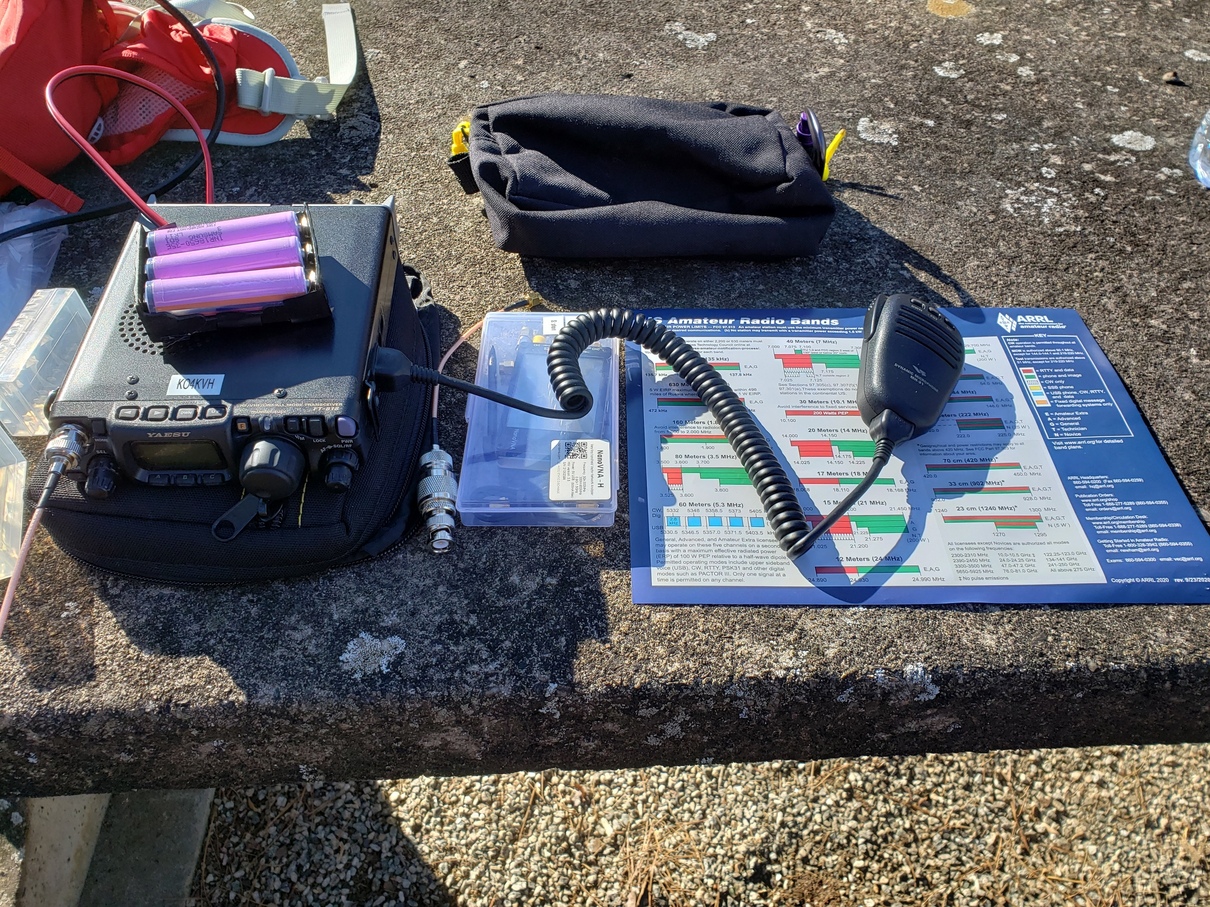
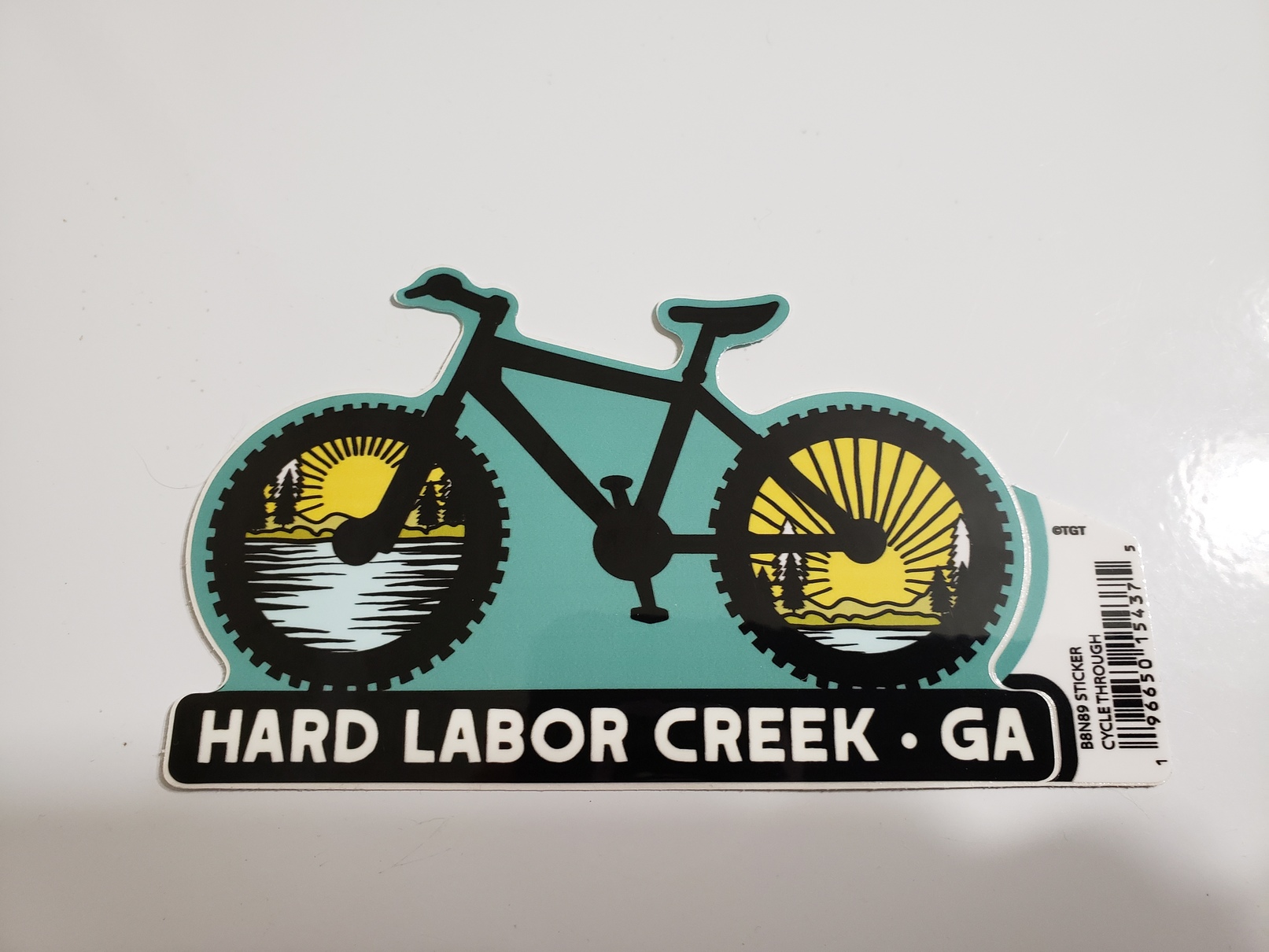
As expected, we quickly found a table near the “lake” with a nearby tree in which Ben could hang the antenna. With my assistance, he set up a 20m end-fed half wave (EFHW), connected it to the FT-818, and started turning the dial! In just over 45 minutes, we were both able to get our 10 contacts each, thereby completing our first POTA activations! It took me a little more time to get my 10th contact because I wasn’t used to using this radio and was speaking too softly into the mic. Apparently, this is a common limitation with the FT-818, and there are some options that we’ll be exploring in the future to improve performance (e.g., an inline speech compressor). Once we returned home, we downloaded HAMRS and immediately logged our contacts into the POTA logbook: this is a habit that I want to continue because you can rapidly get a backlog of contacts with a 10 contact minimum and because quick, sloppily handwritten notes are much easier to decipher when the details of the activation are fresh in my mind.
We spent most of the drive home from Hard Labor Creek discussing how our POTA activation was more fun than either of us expected and discussed some of the challenges we encountered (namely, some of the signals were pretty weak). The next morning, still feeling the excitement from the activation, we decided to head out and attempt another. However, Ben mentioned that the antenna we used as not as efficient as it could be on 20m, so he suggested we replace the wire before this attempt. We’ve had a roll of lightweight antenna wire from SOTABeams for months that we hadn’t yet used, so before heading out, we measured a new section for 20m and tuned it to be resonant in the phone section of the 20m band. Using our NanoVNA, we were able to monitor the SWR while making length adjustments until we reached an SWR that looked good. As an added benefit, the antenna became much more manageable (as the previous wire was considerably thicker and difficult to pack relative to the SOTABeams antenna wire).
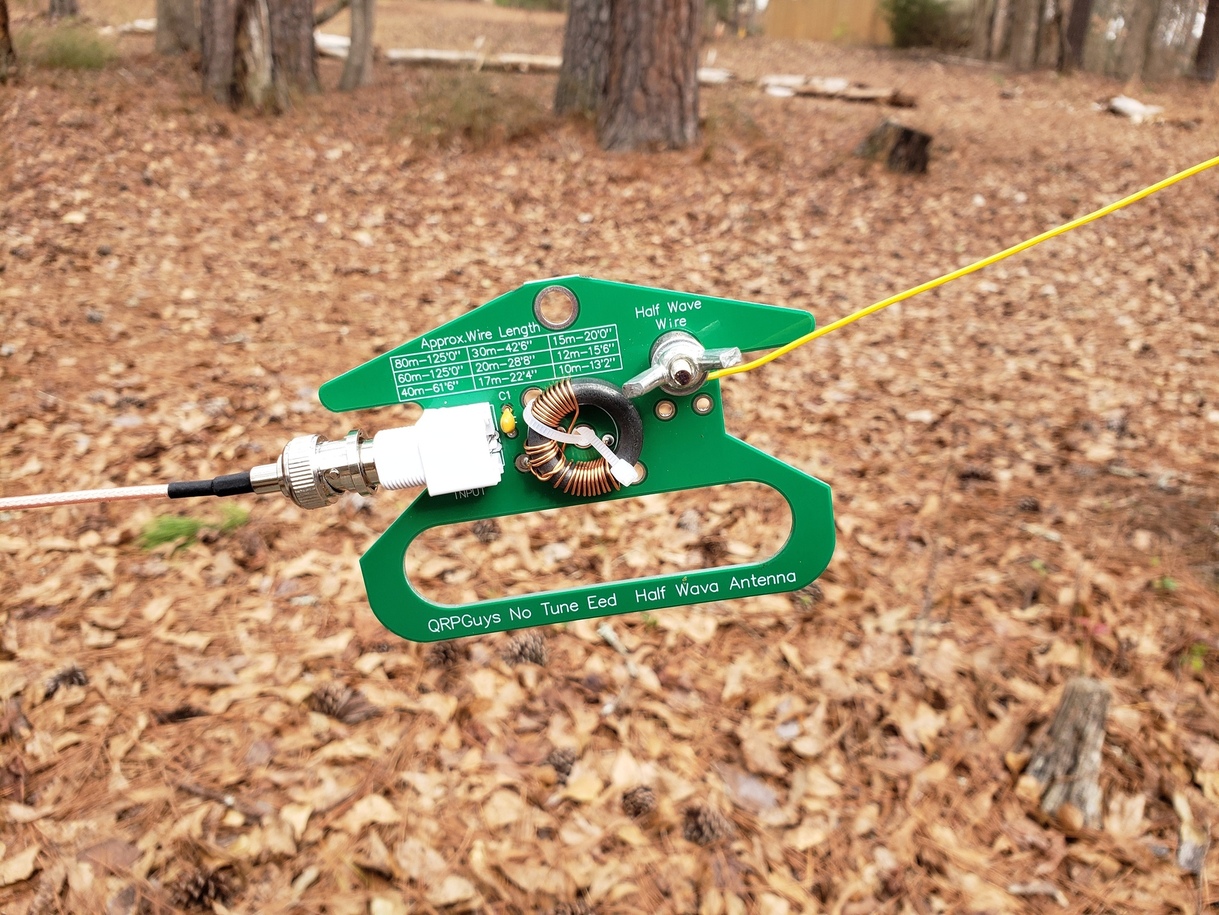
Armed with our new antenna, we set off to Indian Springs State Park (K-2186, Flovilla, GA) for more POTA activities!
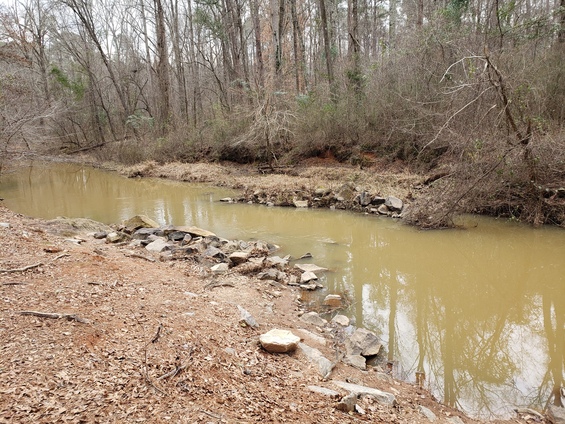
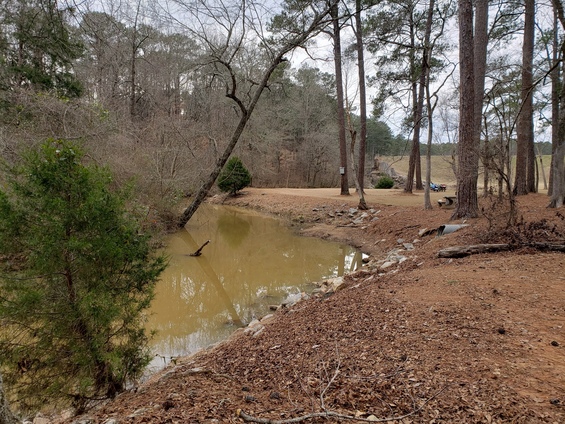
We immediately discovered that the new wire was considerably easier to work with and hang. The time and effort taken to construct our new antenna paid off, as this antenna performed much better. Within the same time frame that we operated at Hard Labor Creek the day before (~45 minutes), we made 3X the contacts, and we were receiving 59 signal reports from stations located hundreds of miles away! It was a blast working so many stations, and I didn’t realize how exhausted I’d be as a POTA newbie. To commemorate the 30+ contacts I made, I picked up another state park sticker, postcard, and a lapel pin, with plans of creating a “scrapbook” of parks we’ve activated.
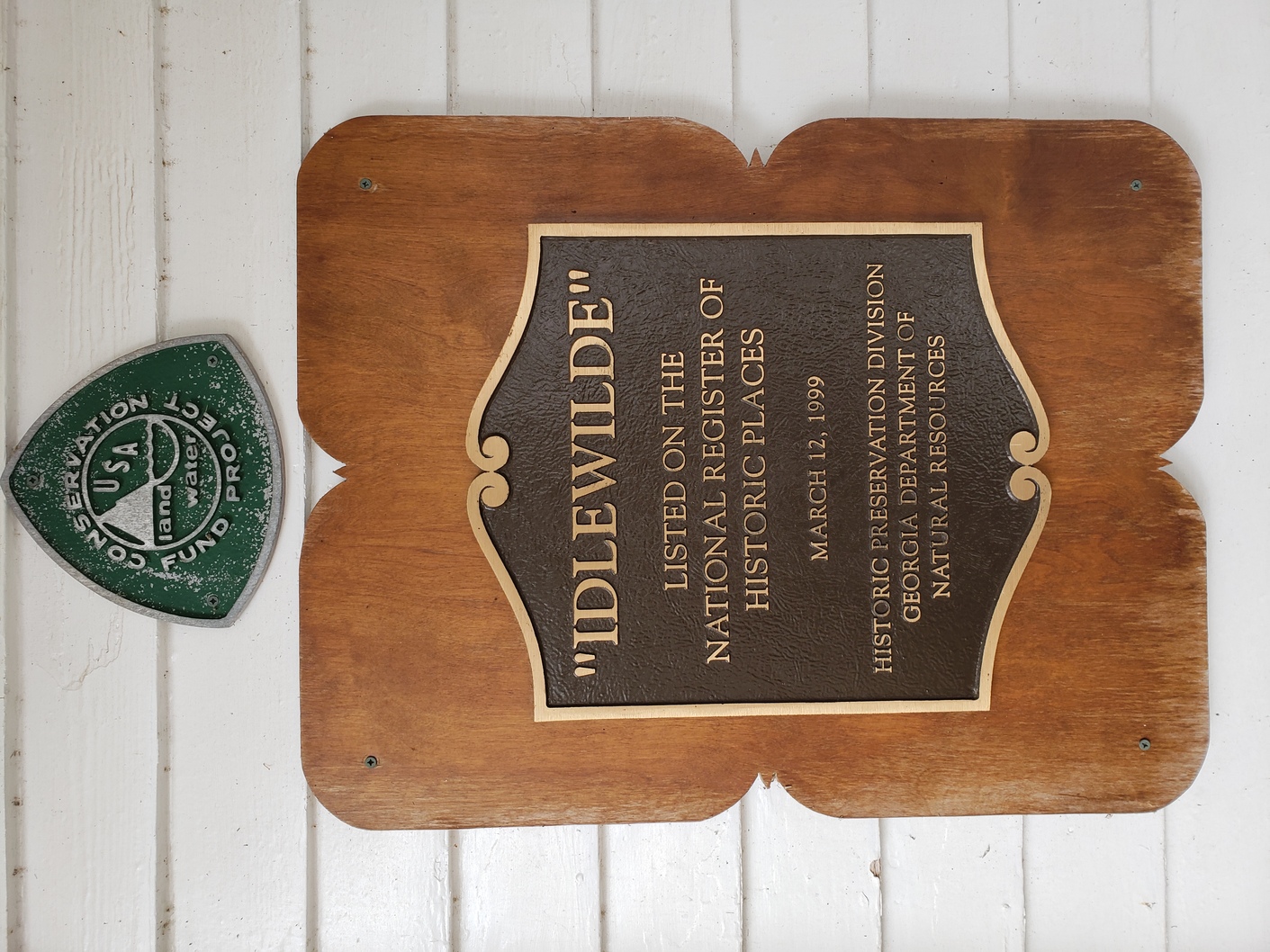
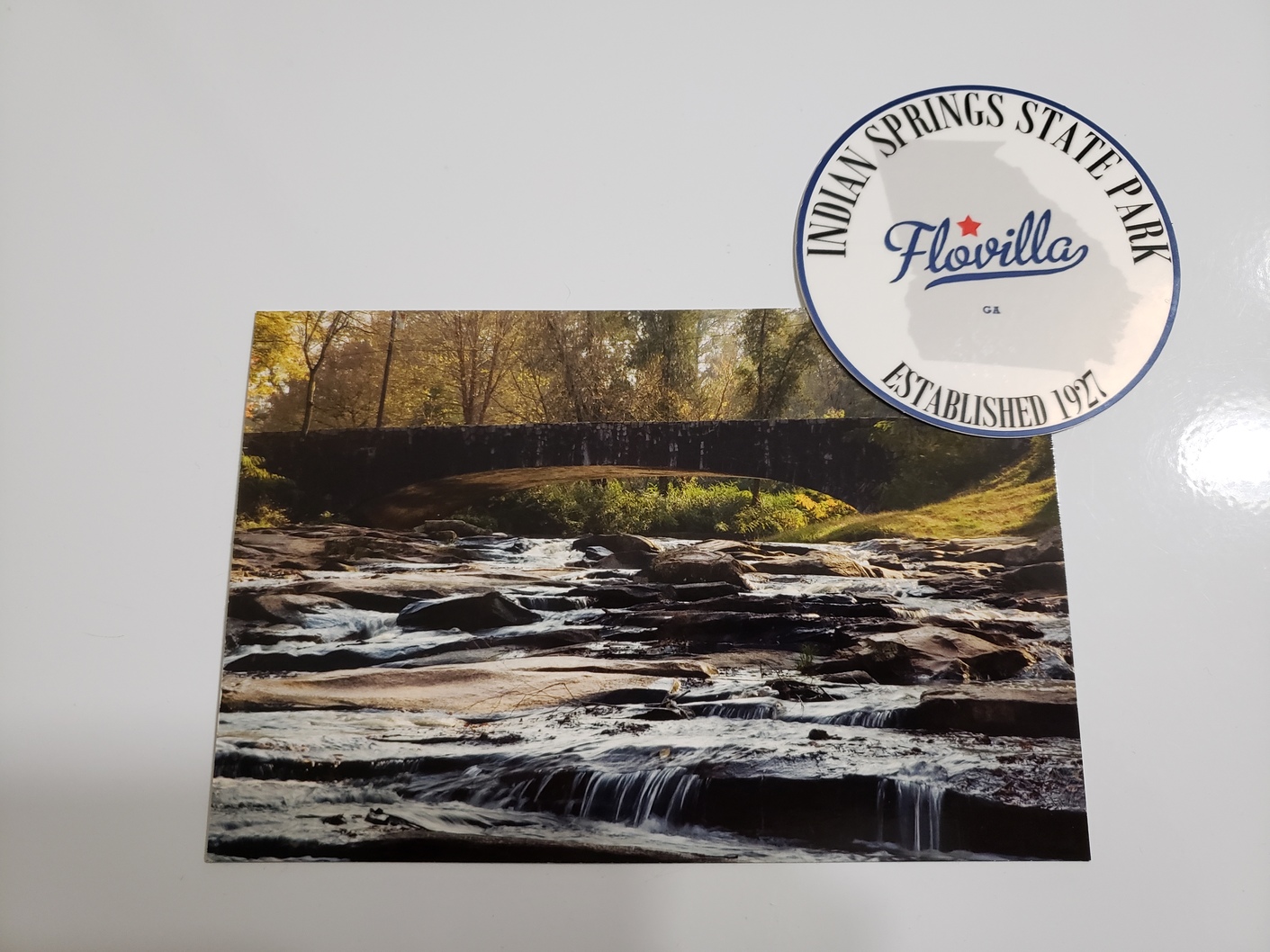
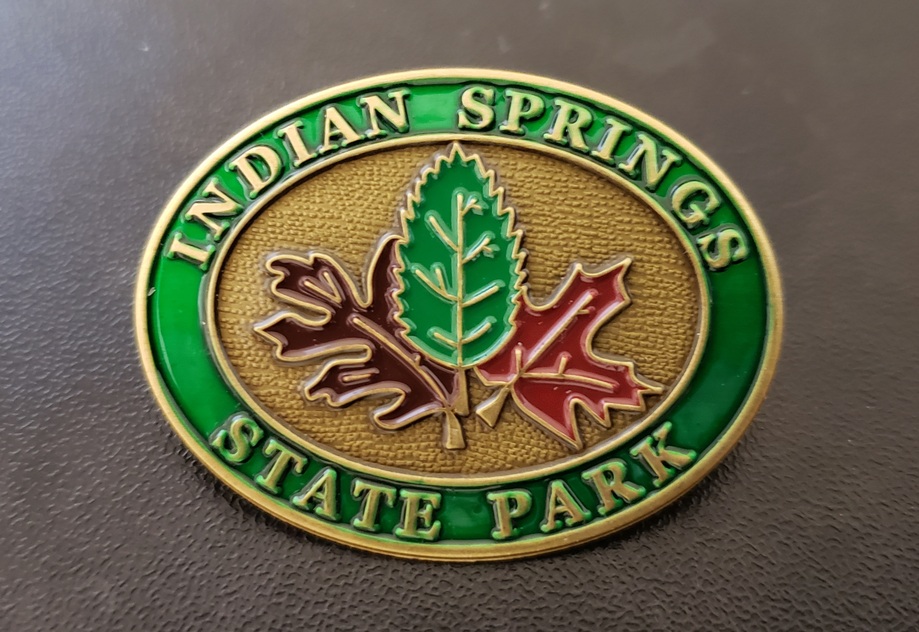
My QSOs from activating K-2186 earned me the Bronze Hunter Award for making 10 unique QSOs. I also made my first international contacts in Ontario, which was pretty neat. Overall, our POTA experiences over the weekend were a lot of fun, and it was great being outside and making the most of the nice weather. I look forward to future activations!
We did have some key takeaways that we want to implement for future activations. At present, we’re only able to operate on 20m with our setup. We’re going to expand the capabilities of our antenna to cover at least 40m and 20m (perhaps 10m as well). Additionally, we’re going to invest in an inline speech compressor for the FT-818 because we’ve heard very positive reviews around signal performance. Finally, as a longer-term initiative, we’re looking into solar panel options to allow us to operate longer as the days grow longer.
Until next time,
73,
Rebecca, KO4KVG
